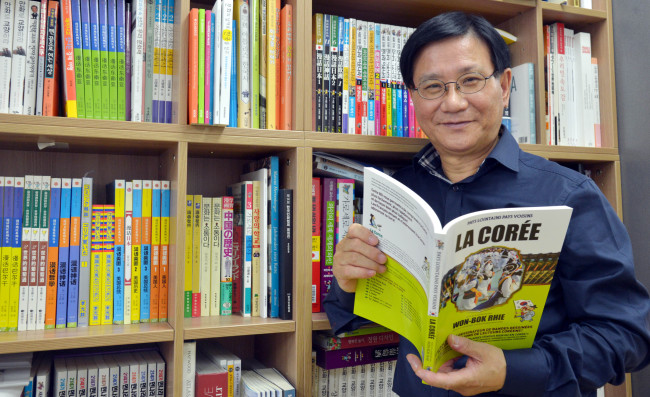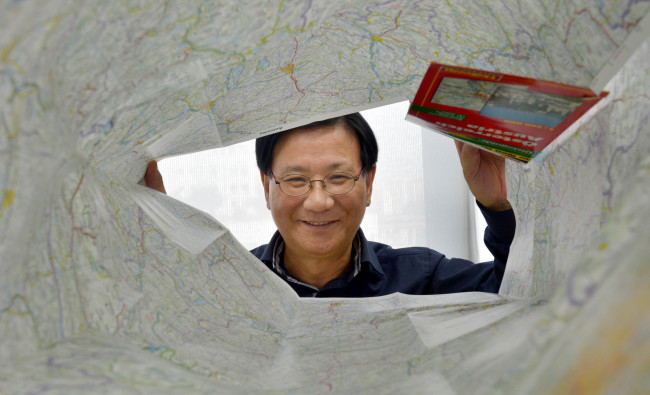Earlier this month, I was in Helong City in the Yanbian Korean Autonomous Prefecture on the Duman River. Across the river, which is the China-North Korean border, is a village in Musan County, North Hamgyong Province. The road was empty, and I took out my camera. About a minute later, a military vehicle with a satellite communication device arrived.
The soldiers said that taking photography was not allowed in the area. While I was let go with an informal warning, questions remained. How did they know I was taking pictures? How on Earth did they arrive so quickly? Cameras on the Broken Bridge of Liangshui in the lower Duman River, destroyed in 1945, turn 360 degrees, and closed circuit cameras are installed along parts of the river. The network of surveillance is extensive. A local resident informed me that cameras can also be found on tree branches and, supposedly, in the grass.
The Dandong region around the Apnok River, frequented by Korean and Japanese reporters, is quite different. The steel bridge is a popular attraction that tourists make sure to take a picture of. Cruise ships constantly bring in Chinese tourists, and you can rent a motor boat to get close to the North Korean side of the river without much restriction. Luxury hotels and a large-scale industrial complex are right across the river from Hwanggeumpyeong, North Korea. Several steps from my hotel, I could see North Korean soldiers working in the field on the other side of a wired fence. Why are these two border regions so different?
In the cities on the Duman River, shabby lodgings offer various Korean television channels, North Korean Central Television and local Korean-language broadcasting. Since it is a Korean autonomous province, road signs are in Korean. Korean tourists visiting Mount Baekdu say they often get confused as to whether they are in China or Korea after looking at Korean signs for hours.
More than 100 years ago, when Yanbian was called Bukgando, there was no distinction between the Koreans who moved there and the people currently living in South and North Koreas. Koreans shared their history, language and traditions and were fighting to take back their homeland. While Koreans live in three countries now, we still are one people. The region is a strategic point in transportation connecting three northeast provinces, Mongolia and Russia’s Primorsky Krai, and a geopolitical key point connected with Najin Port in North Korea.
Yanbian is close to Korea economically and culturally, and 830,000 people who share blood ties with South and North Koreans live there. China may be afraid of the hidden, pent up power of Yanbian. If the ethnic Koreans in China are allowed to have free exchanges with the people of South and North Korea, they could create some chemical synergy - or an explosive reaction. While they are Chinese citizens, the ethnic Koreans may be people with potential to ignite national integration.

- Associated Press
- Jeff Bezos, founder and CEO of Amazon (No. 7) introduces new Kindle Fire tablets.
Tech firms are still tops when it comes to innovation, according to Boston Consulting Group’s 2013 “Most Innovative Companies” list. Apple Inc. held the No. 1 spot for the ninth consecutive year, followed by Samsung Electronics Co. and Google Inc.GOOG -0.20%
But auto makers are shifting into high gear. The current report includes 14 automotive companies in the top 50—and nine in the top 20. Back in 2010, there were just eight automotive firms in the mix.
Staring down tighter fuel efficiency standards, grappling with regular safety concerns and catering to discerning drivers, car makers have doubled down on innovation of late. (Don’t believe us? Check out these stories on Tesla’s bid to produce a self-driving electric car, BMWBMW.XE +0.48%’s light-weight assembly for electric cars and GMGM -1.57%’s electric-car aspirations.)
Toyota Motor Corp.7203.TO -1.08%, Ford Motor Co.F -1.27% and BMW AG were among the 10 most innovative companies, according to the BCG report. General Motors Co. jumped 16 spots this year, to No. 13, while Volkswagen AG rose 31 positions to No. 14. Audi AG, Honda Motor Co. and Daimler AG also had strong showings.
Meanwhile, Intel Corp.INTC -1.84%, Dell Inc.DELL 0.00% and Royal Philips NVPHG -1.06% all fell by at least 11 spots.
The results are determined in part by a survey of 1,500 senior executives who are asked to name the most innovative companies outside their industry, weighed alongside three-year shareholder returns, revenue growth and margin gains.
“The bar is continuing to rise for what it means to be a world-class innovator,” says Andrew Taylor, a BCG partner who works on innovation strategy. Innovation is no longer the buzzword of tech firms, but companies in all industries must be on top of their creative game to compete, he says.
Venkatesh Prasad, senior technical leader of open innovation at Ford, says the fact that his role even exists is evidence the company understands that “innovation plays a central role in our continuing transformation.”
Prasad helps run “ideation” sessions for long-term projects and new products, and the company hosts hackathons to find creative ways to tackle problems like fuel efficiency.
Companies talk plenty about the importance of innovation in maintaining a competitive edge in the marketplace, citing the value of new-product development, strategic planning and a committed leadership team.
About one-quarter of survey respondents say they see innovation as the top priority, and another 53% say it’s in the top three.
But measuring innovation remains difficult, and BCG doesn’t ask survey respondents to explain exactly how they’re defining it. (And don’t get us started on how to teach it.)
“There really is no one size fits all,” Taylor said, adding that one company in a given industry could focus on one or two blockbuster product innovations a year, while another in the same sector may opt for more incremental innovations, but both could be wildly successful.
Here’s a look at the top 20 most innovative companies:
- Apple
- Samsung
- Microsoft
- Toyota
- IBM
- Amazon
- Ford
- BMW
- General Electric
- Sony
- General Motors
- Volkswagen
- Coca-Cola
- Hewlett-Packard
- Hyundai
- Honda
- Audi
- Daimler






.jpg)




![[image]](http://si.wsj.net/public/resources/images/BF-AF778_TWITTE_NS_20130913182104.jpg)